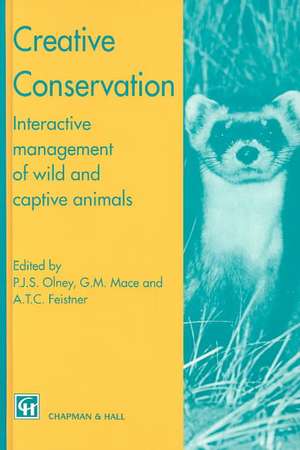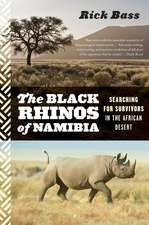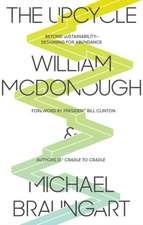Creative Conservation: Interactive management of wild and captive animals
Editat de P.J. Olney, G. Mace, A. Feistneren Limba Engleză Hardback – 31 dec 1993
| Toate formatele și edițiile | Preț | Express |
|---|---|---|
| Paperback (1) | 1828.11 lei 6-8 săpt. | |
| SPRINGER NETHERLANDS – 14 oct 2012 | 1828.11 lei 6-8 săpt. | |
| Hardback (1) | 1830.34 lei 6-8 săpt. | |
| SPRINGER NETHERLANDS – 31 dec 1993 | 1830.34 lei 6-8 săpt. |
Preț: 1830.34 lei
Preț vechi: 2232.12 lei
-18% Nou
Puncte Express: 2746
Preț estimativ în valută:
350.23€ • 381.63$ • 295.12£
350.23€ • 381.63$ • 295.12£
Carte tipărită la comandă
Livrare economică 23 aprilie-07 mai
Preluare comenzi: 021 569.72.76
Specificații
ISBN-13: 9780412495700
ISBN-10: 0412495708
Pagini: 517
Ilustrații: XXXIV, 517 p.
Dimensiuni: 155 x 235 x 34 mm
Greutate: 0.84 kg
Ediția:1994
Editura: SPRINGER NETHERLANDS
Colecția Springer
Locul publicării:Dordrecht, Netherlands
ISBN-10: 0412495708
Pagini: 517
Ilustrații: XXXIV, 517 p.
Dimensiuni: 155 x 235 x 34 mm
Greutate: 0.84 kg
Ediția:1994
Editura: SPRINGER NETHERLANDS
Colecția Springer
Locul publicării:Dordrecht, Netherlands
Public țintă
ResearchCuprins
1 Species extinctions, endangerment and captive breeding.- 2 The effective use of flagship species for conservation of biodiversity: the example of lion tamarins in Brazil.- 3 Meta-populations: is management as flexible as nature?.- 4 Species differences and population structure in population viability analysis.- 5 Molecular genetics of endangered species.- 6 Evolutionary biology, genetics and the management of endangered primate species.- 7 Reproductive technologies.- 8 The role of environmental enrichment in the captive breeding and reintroduction of endangered species.- 9 Disease risks associated with wildlife translocation projects.- 10 Legalities and logistics of meta-population management.- 11 Training in zoo biology: two approaches to enhance the conservation role of zoos in the tropics.- 12 Reintroduction as a reason for captive breeding.- 13 Reintroduction of captive-born animals.- 14 Criteria for reintroductions.- 15 Development of coordinated genetic and demographic breeding programmes.- 16 Conservation Assessment and Management Plans (CAMPs) and Global Captive Action Plans (GCAPs).- 17 Invertebrate propagation and re-establishment programmes: the conservation and education potential for zoos and related institutions.- 18 Captive breeding programmes and their role in fish conservation.- 19 The role of captive breeding in the conservation of Old World fruit bats.- 20 Captive breeding, reintroduction and the conservation of canids.- 21 The recovery of the angonoka (Geochelone yniphora) — an integrated approach to species conservation.- 22 Is the Hawaiian goose (Branta sandvicensis) saved from extinction?.- 23 The extinction in the wild and reintroduction of the California condor (Gymnogyps californianus).- 24 The captive breeding and conservation programme ofthe Bali starling (Leucopsar rothschildi).- 25 An experimental reintroduction programme for bush-tailed phascogales (Phascogale tapoatafa): the interface between captivity and the wild.- 26 Coordinating conservation for the drill (Mandrillus leucophaeus): endangered in forest and zoo.- 27 Reintroduction of the black-footed ferret (Mustela nigripes).- 28 Threatened endemic mammals of the Philippines: an integrated approach to the management of wild and captive populations.- 29 Interface between captive and wild populations of New Zealand fauna.- 30 The potential for captive breeding programmes in Venezuala — efforts between zoos, government and non-governmental organizations.- 31 Species conservation priorities in Vietnam and the potential role of zoos.
Recenzii
A major contribution to the debate about the interactive management of populations of animals under threat of extinction - Ethology, Ecology and Evolution; A very substantial book ... makes a detailed and irrefutable case for zoos as vital partners in the struggle to preserve the world's wildlife - N Gould; ...of great value to those who are concerned with successful programmes for conserving endangered species and care for the environment - Environmental Management and Health; This book presents a full review of the biological, logistical and economic concerns that exist in all efforts to manage populations, and is a major contribution to the debate on interactive management of populations of animals under threat of extinction...the editors have to be congratulated in producing from this conference a document, which not only contains much up-to-date, relevant and important information for anyone working in the fields of conservation and zoo biology, but which also clearly demonstrates how far we have progressed in our knowledge and understanding of the breeding of threatened species both in the wild and in captivity - Animal Welfare; ...the book would be a useful addition to most libraries and the personal libraries of those unfamiliar with the primary literature. Several papers are probably destined to become classics ... - Zoo Biology








